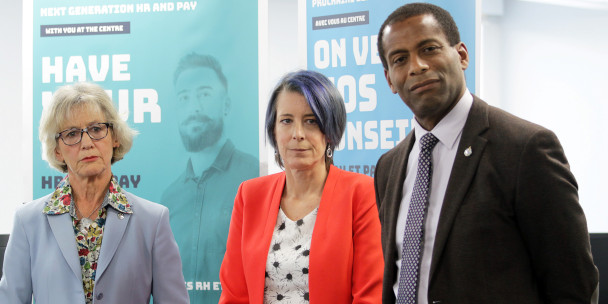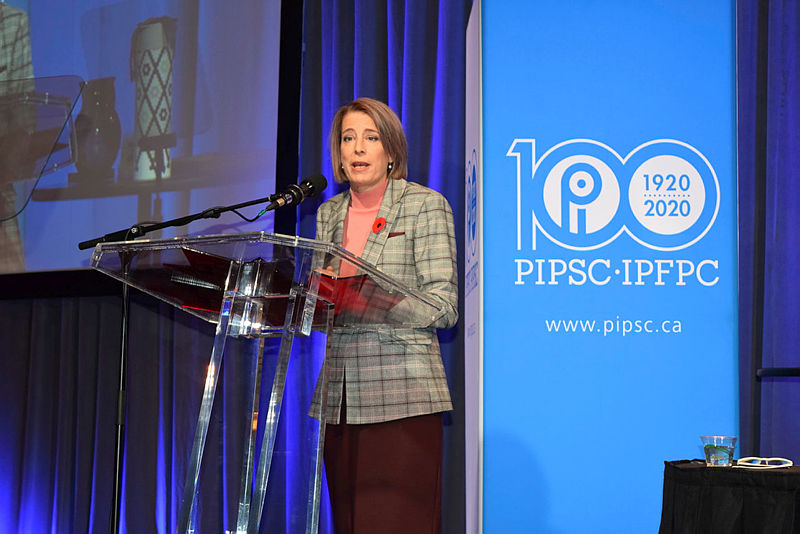Feds expanding NextGen pay system testing to larger, ‘challenging’ Fisheries Department as exploratory phase ends

The federal government’s Next Generation HR and Pay project, meant to eventually replace the problem-plagued Phoenix pay system, is set to be expanded for testing to the Department of Fisheries and Oceans and the Canadian Coast Guard, as well as to the Canada Economic Development for Quebec Regions.
The team spearheading the project, also known as NextGen, was established at the Treasury Board of Canada Secretariat in early 2018, with the Department of Heritage selected as the initial department to test during the first exploratory phase, between October 2020 and April 2021.
President of the Professional Institute of the Public Service of Canada Debi Daviau said although the exploratory phase included the pilot at Heritage, it also looked at the business requirements, gaps, and payrolls of other departments and invited a number of public servants to participate in workshops to identify business needs.
Heritage is a fairly small department, “but it did provide good representation of the government’s human resources complexities,” noted Ms. Daviau, who is the co-chair of regular joint union-management consultations around NextGen, in an interview with The Hill Times earlier this month. “That being said, it’s small and didn’t cover off all of the complexities.”
Fisheries and the Coast Guard are some of the “most challenging” pay groups in the core of public administration, said Ms. Daviau. The Fisheries Department has roughly six times more employees than Heritage.

President of the Professional Institute of the Public Service of Canada Debi Daviau, pictured at the 2019 PIPSC annual general meeting. The Hill Times photograph by Mike Lapointe
“They work on shifts and nothing about their workday is normal or standard, so that’s why DFO was chosen—yes, it’s larger, but I don’t think that was the driver, I think the driver was to pick departments that covered any outstanding payrolls that were not currently being tested,” said Ms. Daviau.
Canada Economic Development for Quebec Regions (CED-Q), which provides funding and support to Quebec businesses and regions, has also been brought into the mix to help confirm the product works effectively in both official languages.
Testing with CED-Q will also help determine if the new payroll software can equally serve small and regional government organizations with headquarters outside of the National Capital Region. Testing also takes place in parallel with existing HR and pay systems within a controlled environment that is completely separate from the current pay system, so federal employees involved will continue to be paid by the Phoenix pay system while the project moves forward.
According to Digital Government Minister Joyce Murray (Vancouver Quadra, B.C.), one of the early lessons learned from the exploratory phase was the need to add “breadth, depth, and more complexity” to the basic pay scenarios encountered in government.
The pilot expansion to the Fisheries Department “offers far more complex scheduling and pay scenarios for this software, and testing at a larger scale,” said Ms. Murray in an emailed response to questions from The Hill Times. “Once again, this testing will take place in parallel with existing HR and Pay systems.”
“Our world-class, hardworking public servants should be paid accurately and on time,” said her parliamentary secretary, Greg Fergus (Hull-Aylmer, Que.), in a July 27 release announcing the expansion of the pilot. “They deserve nothing less. Not only does this milestone highlight our government’s shift to becoming more open and agile, but this is also an important step forward towards finding a long-term reliable solution to meet the changing realities and the future of work.”
Feds consulting with unions on NextGen
Ms. Daviau told The Hill Times that her union is regularly briefed by the NextGen team on its progress, as well as on issues encountered during testing, such as accessibility and language problems.
“From my perspective, the more testing under more complex circumstances just makes sense, because that ‘test-as-we-go’ with Phoenix was an unmitigated disaster, and we’ve been assured that any new pay system won’t launch unless it’s been proven to work through testing,” said Ms. Daviau.
Ms. Murray said Ottawa has had ongoing discussions with bargaining agents throughout NextGen’s Joint Union Management Committee, which meets regularly.
“They have also been included in engagement sessions and workshops, both as participants and observers. We will continue this engagement throughout testing.”

Digital Government Minister Joyce Murray pictured during a press conference in the National Press Theatre in May 2019. The Hill Times photograph by Andrew Meade
The minister thanked partners for providing the government with “incredibly valuable feedback,” adding that it’s “important that we hear from those who will be using this software and those experiencing its features and service.”
“The NextGen team is working out in the open. As this work continues, documents and other information is posted on the NextGen Wiki,” added Ms. Murray.
Ms. Daviau said the correct balance has to be struck between making sure that adequate steps are taken to implement NextGen successfully, but at the same time understanding that people are still seized with problems surrounding Phoenix.
“There’s a balance between rushing and taking your time that needs to be achieved here,” said Ms. Daviau.
Problem-plagued Phoenix pay system launched in 2016
The Phoenix pay system, which first went live in February 2016, was initially rolled out for 34 federal departments involving 120,000 employees. A few months later, in April, after Ottawa launched the second phase involving 67 departments and 170,000 employees, Ms. Daviau wrote an open letter to then-minister of public services and procurement Judy Foote urging the government to postpone the transition to the new payroll system until mounting issues were resolved.
In February 2018, the government committed $16-million over two years toward the search for an alternative payroll system, which was followed by an auditor general’s report in May 2018 that suggested Phoenix had been mismanaged from the very beginning and was never properly tested before its launch.
In June 2019, the government announced that SAP, Ceridian, and Workday were chosen as the three vendors to potentially pilot the Phoenix replacement project. In March 2020, SAP was selected as the vendor.
Problems with Phoenix persist to this day. As of July 21, according to the Phoenix dashboard, there were 104,000 financial transactions beyond normal workload—a number unchanged from June 23.
There has, however, been an overall downward trend in the backlog of financial transactions waiting to be processed at the Public Service Pay Centre, from 384,000 in January 2018 to 104,000 as of July 2021.
The Hill Times






 LICENSING
LICENSING PODCAST
PODCAST ALERTS
ALERTS













